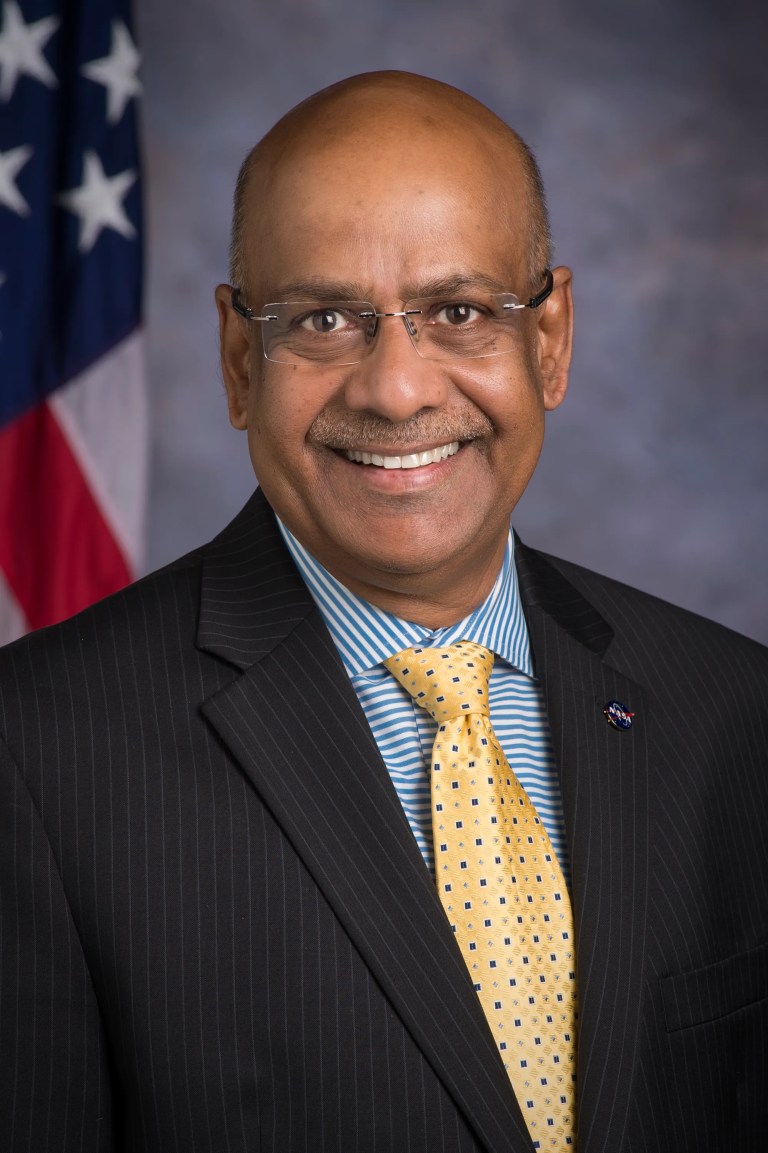
Dr. Upendra N. Singh
NASA Technical Fellow for Sensors and Instrumentation
Dr. Upendra N. Singh, NASA Technical Fellow for Sensors and Instrumentation at the NASA Engineering and Safety Center, NASA Langley Research Center is an internationally recognized atmospheric scientist and laser remote sensing expert with 30 years’ experience. Dr. Singh served as the Principal Investigator of the $70 M multi-Center NASA Laser Risk Reduction Program (LRRP), which he envisioned, formulated and implemented during 2002-2010. His LRRP program has led the way to a significant reduction in risk for lasers in space for global remote sensing using lidars. He conceived and developed new ideas for active remote sensing technologies and techniques for NASA space-based remote sensing, and pioneered the development of world-record energy 2-micron solid-state laser for 3-D global wind measurement from space. The pioneering development led to the award of NASA Earth Orbitor-2 shuttle mission SPARCLE (Space Readiness Coherent Doppler Lidar Experiment) – the first space-based coherent lidar mission for global wind measurement. He is currently serving as Principal Investigator of Earth Science Technology Office funded Instrument Incubator Program to enable space-based measurements of Carbon Dioxide. In the last two decades, Dr. Singh has organized 35 international symposia/conferences and has authored/co-authored over 350 scientific articles in atmospheric sciences and remote sensing area.
Dr. Singh began his career at LaRC in 1996 and served as an Aerospace Technologist in the Remote Sensing Technology Branch (1996-’99) and as the Branch Head of Electro-Optics and Controls Branch (1999-2001) in the Engineering Directorate (ED). Dr. Singh served as the Chief Technologist (2001-2013) and Associate Director for Sensor Systems (2013-2016) in ED providing technical leadership to more than 350 highly qualified professionals in the area of science, aeronautics and exploration. He served as a Chief Scientist from Hughes STX Corporation at NASA Goddard Space Flight Center (1990-’96) and an Assistant Research Scientist at University of Maryland, College Park, Maryland (1985-’90).
He is a Senior Executive Fellow (2002) of the JFK School of Government, Harvard University. In 2002, he was selected into the NASA Senior Executive Service Candidate Development Program (SESCDP) and received his SES certification from US Office of Personal Management (OPM) in 2005. He served on the Board of Editors for the Journal of Optics and Lasers in Engineering, Elsevier Science Ltd, England (2000-2008) and is the Associate Editor for SPIE Journal of Applied Remote Sensing (2007-current). He is the President of International Coordination Group of Laser Atmospheric Studies (ICLAS) of International Radiation Commission (IRC). He served on the Board of Directors for the Society of Photo-Optical Instrumentation Engineers (SPIE) during 2009-11 and SPIE Symposium Committee (2006-2015). He is an elected fellow of the SPIE, and the Optical Society of America (OSA), and a Senior Member of IEEE.
Dr. Singh has received numerous awards and honors including the NASA Outstanding Leadership Medal (2001), the NASA Langley’s H.J.E. Reid Award (2005) for co-authoring an outstanding paper, and NASA’s Exceptional Service Medal (2006).
Dr. Singh earned his Ph.D. degree in Physics from University of Pierre and Marie Curie, Paris, France in 1985, Diplome d’Etude Approfondis (D.E.A) in Optics and Signal Processing from University of Franche Compte, Besançon France in 1982, M. Phil. (Physics) in Quantum Electronics from Indian Institute of Technology, Kanpur in 1980, and M. Sc. (Applied Physics) in Quantum Electronics from Birla Institute of Technology, Mesra, Ranchi in 1979.


























